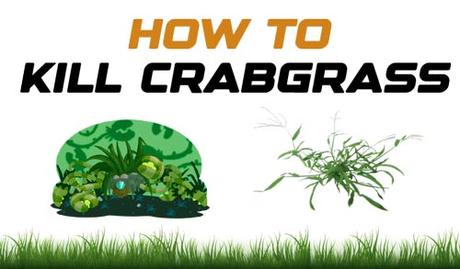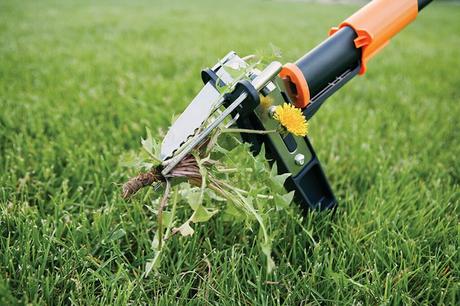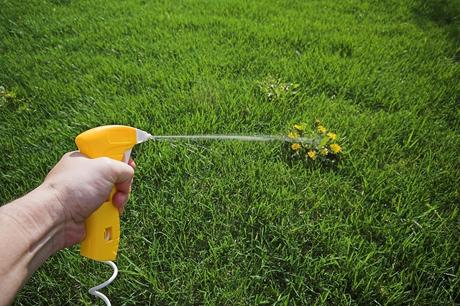If you are a lawn keeper and love to maintain your lawn like a pro, you have to fight many antagonists and vile creatures that will not only destroy the charm and gorgeous look but will also be a catastrophe to the plants.
One of such vile weeds is Crabgrass.
The first tip in this regard is totally organic with zero percent involvement of the chemicals.
How to Kill Crabgrass Organically?
When you opt to do a lawn treatment without letting a chance to the chemicals, it is an organic method to snip the weed. It starts with nipping the weed and sowing the grass seed.
Here are the steps.
01. Bathe the Soil with water
Water the targeted area with an irrigator or garden hosepipe.
Give time to water to seep into the soil properly. One and a half hour will be enough. then wait about 30 minutes to allow the water to soak in.
02. Pull Out the Crabgrass

03. Add organic Compost
After the process of pulling out the weed, compost the area with something organic. Thoroughly and uniformly combining the compost is necessary.
04. Topseed with Turf Grass Seed
Spread the area with grass seeds. Then spread a grass mulch over the area to nourish the soil and retain the moisture and healthy nutrients. It will also stop birds digging out the seeds.
05. Keep the Soil Moist
Irrigate the soil various times a day. Such a practice will dampen the soil considerably and will be very feasible for grass seedlings to sprout.
06. Switch to Deep Watering

07. Mow the saplings
To keep up your new area of grass, mow it high. It refers to mowing the lawn in such a way that the grass left behind is no more than 3 inches tall. It will protect its own turf. This process will stop the sunlight reaching crab grass and kill them eventually.
08. Hoe as Needed
The pulling out of crab grass is not confined to one day only. It should be done over and over again all throughout the year. Pull out any crabgrass that sprouts out. This will leave your patch crab free the upcoming spring.
We can pull out the weed in early spring manually or with the help of a machine. Reseed the empty patches and provide basic required nutrients. This is an eco-friendly way to eradicate the weed.
If the crab grass is persistent and is spreading in influx, you need to worry about it a lot. This post emergent case needs a proper chemical treatment. It is to be done as early as possible as tender grass crab is easy to destroy. So act sharp and smart!
Tips to deal with the crabgrass:
Given are the most prominent tips to deal with the vicious crabgrass.
Pre-emergent Treatments
Never wait for the crab grass to be part of your lawn. You have to take some precautionary measures before this hostile and vicious weed becomes the part of your dilemmas in the yard. As precaution and prevention is better than cure, try not to let it dominate your happiness. If the timing of the action is accurate the success is yours. So to nip the evil in the bud, the horticulturists have to be well equipped with the "war heads". It starts growing in spring when the mercury touches the 55 degrees of the Fahrenheit scale. We need to have a Pre-budding strategy. To kill the bird before it's hatched is the best stratagem ever. There are many herbicides that tend to kill the crab grass quite efficiently before its emergence.
The preventers for the crabgrass work before it peeps out of the soil. So keep an eye on the temperature of your soil for timely action. Apply any chemical, preventer, weed killer, or any domestic trick before the attack of the crabgrass.
Preventive (Pre-emergent) Treatments

Pre-emergent works by obstructing seed germination. Furthermore, it also stops the root development of the weed. Which is why even if the weed survives the blow it can never become a strong plant nor can do any damage to the soil or neighboring plants. Pennington Ultra Green Crabgrass Preventer plus Fertilizer III 30-0-4 is a superior crabgrass and broadleaf weed preventer. It works for up to five months. The plus point of this preventer is being a fertilizer it also nourishes the yard's grasses.
According to a recent research, the mentioned below chemicals are deemed to be effective means of pre-emergent control:
- Benefin (Lebanon Balan 2.5G)
- Benefin and trifluralin (Team)
- Bensulide (Bensumec)
- Bensulide + oxadiazon (Goosegrass/Crabgrass Control)
- Dithiopyr (Dimension)
- Oxadiazon (Ronstar)
- Pendimethalin (Pre-M, Pendulum, Halts)
- Prodiamine (Barricade)
- Siduron (Tupersan)
Attention: Always monitor and obey the directions on the label or manual before using a specific preventer. Generally two months gap is recommended or two mowing spaces is given between using a preventer for the second time again.
Post emergent treatments
Understanding the crabgrass cycle
The real thing in this regard is understanding the crabgrass emergence and its cycle. The crab grass ends with the end of season but not its aftermath. A single crab grass produces about 0.15 million seeds! These seeds are a true dilemma for the next season. They will sprout out into a new quandary in the upcoming spring and the cycle continues. The seeds that do not germinate remain active to start cataclysm the next year.
It's no use crying over the spilt milk.
Mowing the lawn once the damage is done has no benefit. Their growth is even lower and lesser than one that is recommended to be a healthy mowing height. So mowing after it has sprouted out has no claims of victory. Thus this seed producing weed needs to be eradicated before it is hatched out.

